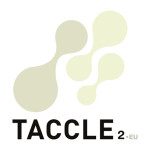LEARNING OBJECTIVES
At the end of this post you will be able to:
- Describe what image hosting and sharing applications are.
- Say why they are necessary.
- Explain how they work.
- Search for and use images from an image-hosting site.
- Upload images to an image hosting site
WHAT THEY ARE
Image sharing site is a generic term for websites that provide storage and publishing facilities for your photographs, presentations and videos. We have already looked at specialist video sharing sites (such as YouTube) and presentation sharing sites (such as SlideShare). This section is specifically about sharing still photographs. However, because the first of the image sharing sites were actually sites for sharing photographs, the terms ‘photo sharing’ and ‘image sharing’ are often used interchangeably.
The term can also be loosely applied to the online photo galleries that are setup and managed by individual users, including photo blogs.
Photo sharing sites
The first photo sharing sites originated primarily from the services that provided online ordering and finishing of prints (photo-finishing) in the late 90s. Some companies started to offer permanent storage and centralized access to users’ photographs as well as returning paper copies or CDs. Dedicated photo sharing sites followed soon after.
They have increased in popularity as the uptake of digital cameras has increased because users do not have unlimited space on their computers or web spaces to store all their photographs. Also sharing digital photographs with family and friends by email chews up a lot of bandwidth, is slow and often exceeds the file size limit imposed by internet service providers (ISP’s).
More and more users allowed their photographs to be made public, rather than restricted to their own use. Many of these were happy to allow other people to use the images. This turned the sites into huge picture libraries.
HOW THEY WORK AND GETTING STARTED
There are many different photo-share applications and they are all slightly different. However, they have the same basis features. If you just want to search for a picture, for example, of a friend’s holiday, as long as they have sent you the exact url of the picture you can access it by typing the url in to your browser or use their name or other identifier to find it through the site search engine.
Similarly, if you are looking for a photograph to illustrate a PowerPoint that you are preparing, then you can go to the site and browse the images under categories or search by keywords. The owner of the picture will indicate what restrictions there are, if any, on copying and reusing the photograph.
However, if you want to upload photographs yourself, you will need to register and create an account. The sites all give clear instructions on how to upload.
Photo submitters are asked to tag their images (see section on metadata), which allow searchers to find images related to particular topics, such as place names or subject matter. Flickr was also an early website to implement tag clouds, which provide access to images tagged with the most popular keywords. Because of its support for tags, flickr has been cited as a prime example of effective use of folksonomy
Applications
There are several great photo sharing sites of which the biggest, and the one we would suggest using, is flickr. Picasa, Photobucket and BubbleShare are also excellent for storage and management but flickr is the largest and claims to have over 3 billion pictures in its repository.
However, you need to know that there are also desktop applications whose sole function is sharing photos, generally using peer-to-peer networking. There are applications that allow you to email photos, for example, by dragging and dropping them into pre-designed templates. These may include their own photo-sharing features or integration with other sites for uploading images to them. Some also provide a “contact list” which can be used to control image access for a specific set of users.
Photo sharing is not confined to the web and personal computers but is also possible from portable devices such as camera phones, using applications that can automatically transfer photos, as you take them, to photo sharing sites and photo blogs, either directly or via MMS. Some cameras now come equipped with wireless networking and similar sharing functionality
Privacy
Normally, sites provide both public and private image storage. When you upload a picture you will be able to set privacy controls that determine who can view the image. A photo can be flagged as either public or private. Private images are visible, by default, only to the up-loader, but they can also be marked as viewable by friends and/or family. Privacy can also be affected if you add photographs to a “group pool”. If a group is private all the members of that group can see the photo. If a group is public then the photo becomes public as well.
Flickr also has a “guest pass” system that allows private photos to be shared with non flickr members. For instance, a person could email this pass to pupil’s parents (who may not have an account) to allow them to see the photos otherwise restricted from public view. This setting allows sets to be shared, or all photos under a certain privacy category (friends or family) to be shared.
Other features
Most photo sharing sites provide multiple views (such as thumbnails, and slideshows), the ability to classify photos into albums as well as add annotations (such as captions or tags) and comments. Some photo sharing sites provide complete online organization tools equivalent to desktop photo-management applications.
Flickr also allows users to organize their photos into ‘sets’, or groups of photos that fall under the same heading. However, sets are more flexible than the traditional folder-based method of organizing files, as one photo can belong to one set, many sets, or none at all. Flickr’s ‘sets’ represent a form of categorical metadata rather than a physical hierarchy. Sets may be grouped into ‘collections’, and collections grouped into higher-order collections.
Finally, flickr offers a fairly comprehensive web-service API that allows programmers to create applications that can perform almost any function a user on the flickr site can do.
PHOTO SHARING IN THE CLASSROOM
Sites such as flickr have revolutionized preparing presentations, worksheets, classroom displays and other teaching materials. Images are available on every subject under the sun and beyond. If you intend to publish or share any of your materials that contain downloaded images, you MUST check that you are allowed to do so and under what conditions.
Rather than searching directly on flickr for pictures then finding that you are not allowed to reproduce them, try the following: Go to http://search.creativecommons.org/. Play the short video there which will tell you all about Creative Commons Licences (or read Chapter 26 in this handbook). Then click on the flickr logo in the top tool bar. This will take you into flickr but will filter out all the images that are not freely available for you to use.
At the top of the page there is a green box where you have the option of refining your search further. The only one you are possibly going to need is the one that filters in only those images you are allowed to modify and adapt, as we explained above.
Make sure that students understand these rules too.
Set pupils assignments that involve using a picture-sharing repository. For example, ask them to find pictures in advance of a lesson around the topics you intend to cover. Print them off and make a wall display or put them all into a PowerPoint presentation and work your lesson around it. Pupils love seeing the pictures they have chosen in a presentation.
Alternatively, ask pupils to find pictures to illustrate what you have told them in a lesson as a homework project.
If they are submitting essentially text-based homework, encourage them to include pictures as well.
Keep a digital camera in the class all the time and encourage the pupils to use it for recording activities, work in progress, finished work, wall displays and so on. Publish these using flickr. Remember, you should NOT put photographs of children in the public domain unless you seek parental permission so you need to set up a private group. However, sharing photographs they have taken of their work and their achievements on a public site makes a good resource for other teachers.
Remember, what seems really boring for you might be exactly what a teacher in another country might want to show their pupils about schools in your country.
Experiment with a bit of synesthesia (linking sensory input into one sense with another sense), for example, finding pictures to illustrate music or vice versa. You could use Voicethread for this. Or ask pupils to find pictures that illustrate abstract concepts such as ‘trust’ or ‘prejudice’ and use them to start a discussion. Or keep a class photo blog and publish it.
ASSIGNMENTS
- Set yourself up a flickr account or an account on another photo sharing site.
- Watch the creative commons video at http://search.creativecommons.org/
- Take one of your old boring PowerPoint presentations and give it a new lease of life with pictures downloaded from a repository.
- Publish at least 3 digital photographs you have taken that you like.
Resources and reference material
Commoncraft (2008),’Online Photo Sharing in Plain English’ (WWW). Commoncraft, LLC: www.commoncraft.com/photosharing (19.05.09)
Creative commons (s.d.),‘Wanna Work Together?‘ (WWW). Creative Commons: http://search.creativecommons.org/ (19.05.09) Wikipedia (2009),‘Photosharing‘ (WWW).
Wikimedia Foundation, Inc.: http://en.wikipedia.org/wiki/Photo_sharing (19.05.09)
BubbleShare: www.bubbleshare.com
Flickr: www.flickr.com
Photobucket: http://photobucket.com
Picasa: http://picasa.google.com




 English
English Nederlands
Nederlands Deutsch
Deutsch Italiano
Italiano Español
Español Português
Português Română
Română Cymraeg
Cymraeg
No comments yet.